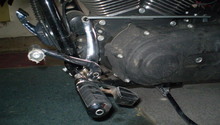Harley Davidson Softail: Transmission Diagnostic Guide
Learn how to diagnose some of the most common transmission problems here, as well as how to fix them.
This article applies to the Harley Davidson Softail.
Transmission problems on your Softail can range from the mildly annoying to major problems if they aren't addressed right away. A professional is going to charge you a bundle getting down to the problem, as many of these can require a complete tear down of your transmission, clutch and shift lever. Some problems are easily enough fixed on your own, others will require some professional help if you are at all a bit nauseated at the idea of tearing apart your baby. The biggest help you can give yourself is to narrow down the issues to the most probable culprit. If you then have to take her to a pro, at least you can minimize the labor in searching for the problem. Learn what to look for and how to potentially fix the problems here to save yourself a good deal of money.

Materials Needed
- Allen wrenches
- Box wrenches
- Flat head and Phillips head screwdrivers
Step 1 – Check your shift linkage
The shift linkage could be rusty and binding, causing problems shifting up or down to one or more gears.
In many cases, the shift linkage rod is improperly installed or has otherwise started to bind, particularly against the primary cover. This prevents the toe shifter from making the full movement, which is most often felt from neutral to first and back again. The linkage is out there and is prone to getting grime, grit, as well as bit rusty. This is an easy fix to take it apart and clean it up well. Pay particular attention to the mounting holes and clean them out well. This should solve the problem with shifting up and down between gears. If the arm is binding against the outer primary, the linkage is extremely easy to adjust, usually a small one spline turn is all it takes. Make sure that the teeth of the spline are in good working order and they are not rounded and shifting back out of position. This is also assuming that the clutch lever and cable is of the correct length and making a full range of motion.
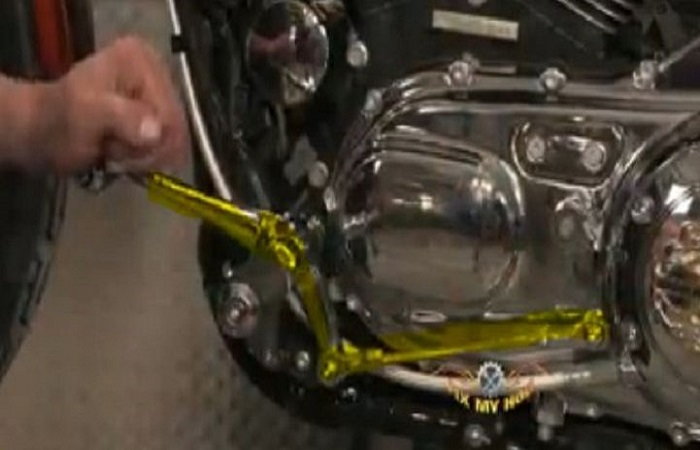
Figure 1. Binding issues with the shift linkage is one of the most common transmission problems, as well as one of the easiest to remedy. 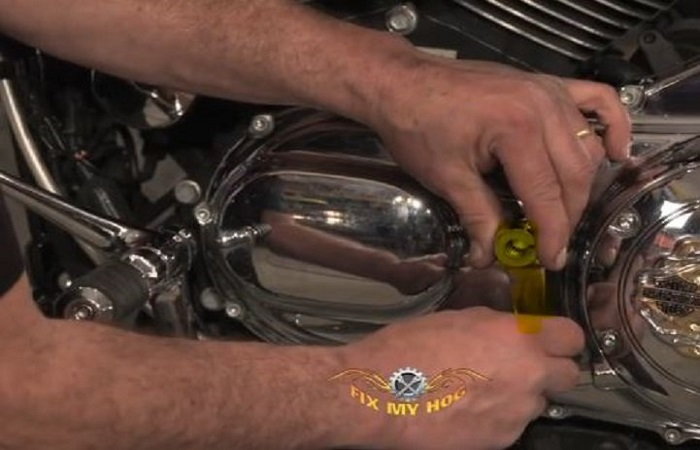
Figure 2. Adjusting the linkage arm is as easy as loosening the top gear, pulling it off and making a small, even one spline, adjustment.
If the linkage is good or cleaned up but you still have problems, check your clutch cable and lever.
Step 2 – Check your clutch lever and cable
You might not be getting a full range of motion to properly engage the clutch pack.
The clutch lever must make a complete range of motion from open to fully closed against the handlebar. In many cases, aftermarket hand grips that are over-sized will prevent the clutch lever from hitting the full range of motion it needs. The cable must be adjusted as well, as too much slack may cause the same condition. Both the cable and the level can easily be adjusted to allow for the proper range of motion with a simple box wrench or pliers. If you do have over-sized grips, you should consider getting a smaller diameter grip to ensure that the clutch lever closes all the way when squeezed. You may also want to carefully inspect the shift return spring to make sure that it is in good working order. It may not be releasing the clutch properly and in most cases, you will not need to open the clutch assembly to get to this part and replace it.
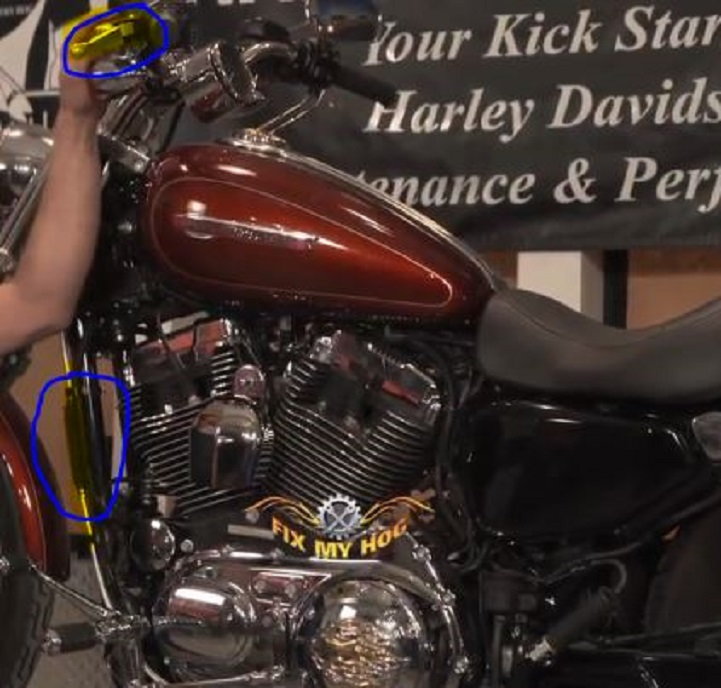
If your clutch lever as well as cable is properly adjusted and the linkage is cleaned, it's time to start tearing things apart.
Step 3 – Check the clutch pawl and spring
The clutch pawl or spring may be worn and not engaging the gear.
When you can upshift but not downshift, or vice versa, this is usually an indication of a worn pawn or its associated spring. Some folks advocate that the primary cover needs to be removed; while this makes the inspection and adjustment easier, it is not absolutely necessary for most applications. You may, however, need to remove the top cover as well as the oil tank to really get at it if you must replace the spring. The pawl is the lever just outside where the shifter shaft goes into the transmission. The most common culprit here is a broken spring. It is not too difficult to fix yourself, but getting it adjusted just right can be tricky as you can unintentionally adjust it again when tightening things back up. You'll need plenty of time and patience doing this yourself if you want to save several bills from having a pro do it for you.
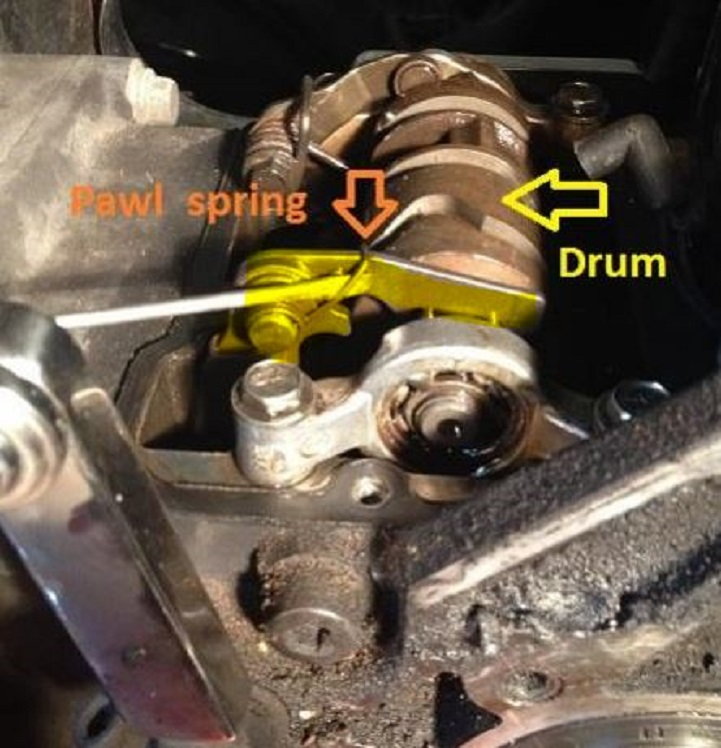
If your issue is hard shifting into 5th gear and feeling like it's lugging, this may actually be normal.
Step 4 – Check your shift points
Many owners complain about 5th gear shifting too low according to the owner's manual.
The owner's manual calls for the low end of 45 mph to shift into 5th gear. This is too low for many owner's personal preference. You may simply just need to adjust the timing of your shifts and let the bike get up to the 50 to 55 mph range before shifting into 5th. This may seem unnatural at first, but many folks easily get used to it and it soon will become natural.
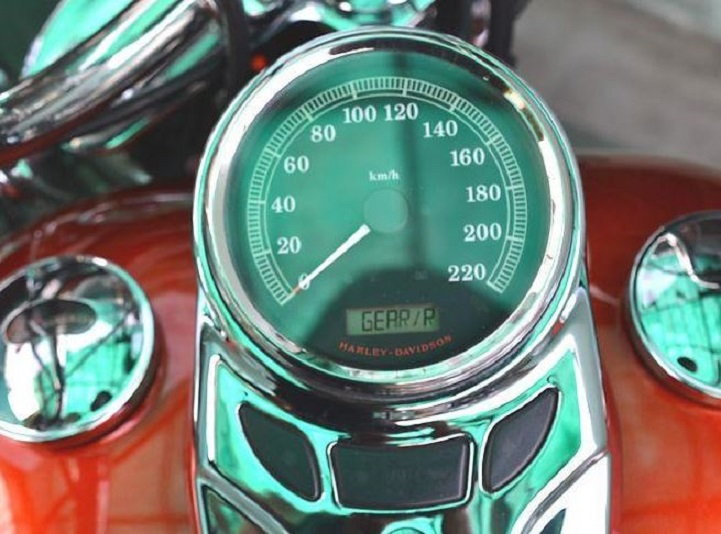
If your transmission problems are really more extensive, you may want to call in the pros.
Step 5 – Open up the engine to inspect transmission
Grinding gears, clunking, and constant growling indicate bigger problems with the shift fork, transmission bearings, and the gears themselves.
You may have a bent shift fork or a seized gear on the transmission shaft. You'll need to open up the engine and inspect these items. A bent shift fork isn't all that uncommon when you hear and feel grinding when shifting. Unfortunately, if this has been going on for a little while, you'll likely need to replace the gears as well. This isn't a job for the faint of heart, and unless you are particularly adept at such jobs, you'll probably want to have a certified Harley mechanic take a look at your ride. A constant growling noise is indicative of the transmission sliding out of position because of worn bearings, which will need to be replaced as well as the gears themselves. Inspect them carefully. If you are getting a bad clunking noise, you are probably looking at broken gear teeth. The shift fork is probably no good at this point either.
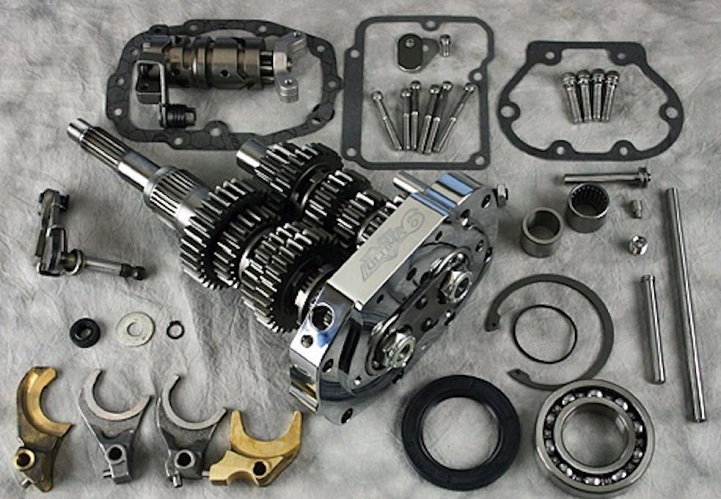
Related Discussions
- Softail Tranny Shifting Problem - HDForums.com
- Softail Heritage Transmission Issue - Does Anyone Else Have a Problem? - HDForums.com
- Night Train Transmission Issues - HDForums.com
- Diagnosing Various Transmission Problems - HDForums.com
- Shifter Pawl Adjustment Help - HDForums.com
- Shifter Pawl Shift Lever - HDForums.com






